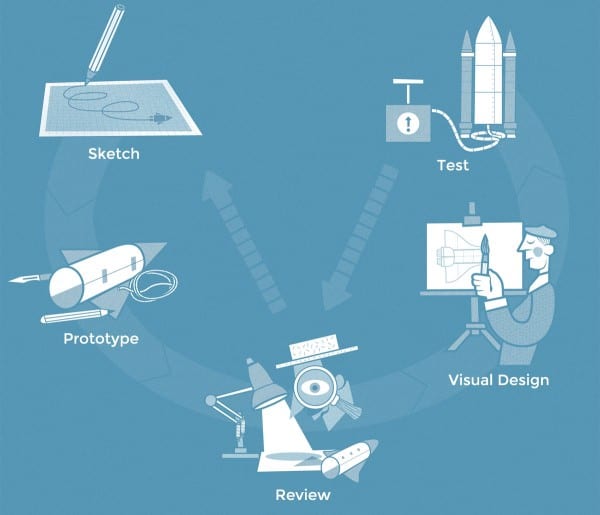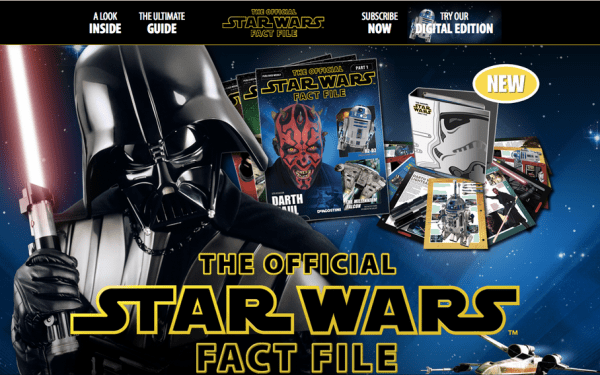Using the Agile process to achieve results faster and reduce development time
While the concept of Agile (Yes, with a capital 'A'), may have started out as a software development technique, the concept has now spread across other areas of business and product development.
Businesses are also successfully using the Agile process in marketing, product development and even creative projects.
One of the best simple examples of a company using the Agile process successfully is Oreo. Their 'You can still dunk in the dark' Tweet during the Super Bowl outage has become the stuff of legend.
It could only have happened with a team put together using the Agile approach.
What is the Agile approach, anyway?
The overall aim of the Agile approach is to produce a functional product in a short time. Traditionally, the client sees the product only when it’s ready. In the Agile approach, the client is involved in every step of the way and is in fact encouraged to provide feedback.
Depending on the feedback received from the client, changes are made during the development time. This way, the client gets exactly what he wants and there’s no outright rejection of the product (as it often happens in traditional project development).
An important thing to note in Agile product development is that the finished product doesn’t have any bells or whistles. That comes later. The initial focus is on creating a functional product that can be put to use immediately.
Contrary to popular belief, agility or the Agile approach isn't just about flexibility and fast turnaround time. It's also about better risk management, timely feedback, targeted results, enhanced customer satisfaction, and quick problem solving.
To put it in a nutshell: The Agile approach requires the collaboration and feedback of the customer/client/target market during the development process. Not after it.
How the Agile Process works
- The Agile approach is characterised by small functional teams, faster turnaround time, the ability to make decisions, testing early and often, and encouraging feedback at every step of the way.
- Developing a product through the this approach involves putting together a small collaborative team, whose members bring a mix of skills needed to complete the project.
- The team brainstorms and picks out the most viable ideas and presents it to the client. Once the client gives feedback, the work begins.
- The process is repeated at every step until the client has a product that they are completely satisfied with.
The 3-Step process to using the Agile approach on creative projects
Even though the Agile concept originated from software development, I can’t help but wonder if it did not actually come from creative projects. It seems the characteristics of agility would have been ideal in creative environments.
Let me explain..
Here’s the thing: The characteristics of agility that of flexibility, fast turnaround time, client feedback etc. are all part and parcel of developing creative projects.
But it still takes longer than both parties would like and you still run the risk of having your final product rejected by the client. With the Agile process, all it takes is setting up a 3-step process that takes care of these issues.
3 step Agile process
Step 1: Ask -> Analyze -> Discover
- Think of this step as taking your client out to tea (or a date, except the part where you’ve already impressed the client and won the project). Find out as much as you can about your client’s company and find out their project goals.
- What do they envision? What is the purpose of this project? What’s the end goal? What result do they need to get for them to consider it a success?
- Use their answers to analyse and discover the scope of the project. Figure out which techniques and tools you need to make the client's vision a reality.
Show your findings to your client to make sure you’re both on the same page. Once you have the client’s feedback, move on to the next step.
Step 2: Imagine -> Think -> Plan
- Now that you have everything you need to get started, it’s time to develop a user story for the project. Come up with a plan and chalk out every step that needs to be taken.
- After adding a brief explanation of what will happen at each step, send it back to the client for feedback. Once you have that, it’s time to move to the third and final step.
Step 3: Design -> Develop -> Sprint
Having received the go ahead on the plan, it’s time to design and develop the project. The client is actively involved during the designing and development of the project. Based on the client’s feedback, go back to the drawing board and make the required changes.
The one important thing about this step is the time factor. Because the goal is to develop a project in a short time, the process is broken into fixed durations called 'Sprints'.
In a creative project, a Sprint typically involves sketching, prototyping, review, visual design, and testing. The project can go back for a review at any stage depending on the client's feedback.

This entire process is repeated until the client is 100% satisfied with the project.
The 3-Step Agile Process on creative projects in action
Here's how we used our 3-step process for DeAgostini, one of the world's biggest part works publisher for whom we develop fully functional websites for their various product lines.
Stars Wars case study
One of their projects was to develop a Star Wars Factfile website. As the chosen partworks publisher for the upcoming Star Wars movie, DeAgostini approached Activate Media to build a digital version of their magazine for Star Wars collectors.

However, they wanted to test the interest of their Star Wars collectables from fans before investing in a full bells and whistles website ahead of the next Star Wars film release.
- We Asked, Analyzed, and Discovered
We consulted with them on project goals (to build a functional website for Star Wars collectors, quickly without sacrificing usability). When we reviewed their web analytics, we noted that a significant amount of their website visitors accessed them from mobile devices. As a result we opted to build a responsive mini-website for this project.
One of their goals was to make the website a gateway for Star Wars collectors to subscribe to their print and digital collections.
- We Imagined, Thought, and Planned
We helped DeAgostini to develop user stories for the project in order to keep the website user-centric. These consisted of one or more sentences that the end-user is likely to use. In this project, the user was the Star Wars collector, and one of the stories was:
'I want a central place to easily discover, buy, and store official Star Wars information'.
- Then We Designed, Developed, and Ran Sprints
Because of our 3-step process, DeAgostini was able to give us their feedback at every step of the way. We had regular communications with their marketing team which helped us respond quickly to their feedback with changes during the design and development phase.
To ensure that the regular communications didn’t lower our productivity, we broke our work stages into short sprints. After each sprint, we tested and gathered feedback until the final product was ready.
The result: A functional test website built within 3 weeks. Not bad considering that a full version, with additional features would have typically taken 3-4 months to build.
Using the Agile approach with your clients and customers
- The success of an Agile project is in the partnership between the project development team and the client. One doesn’t work well without the other.
- So whether you are developing a project for a specific client or a product for customers, it’s important to educate them about how the Agile process works and set some ground rules.
- Don’t just give them a free reign when it comes to feedback. Ask specific questions and teach them to give you specific feedback.
- Set up a process on how your team will deal with negative and positive feedback. Tell the client what will happen in each case. The more you explain about how your team works, the better the partnership will be.

Thanks to Rita Auta for sharing her advice and opinions in this post. Rita is a Communications Professional at digital media agency
Activate Media. She recently wrote the ebook
How to build a consistent digital brand experience and likes to blog about business web technologies. You can connect with her on
Twitter or
LinkedIn.




 Thanks to Rita Auta for sharing her advice and opinions in this post. Rita is a Communications Professional at digital media agency
Thanks to Rita Auta for sharing her advice and opinions in this post. Rita is a Communications Professional at digital media agency 


